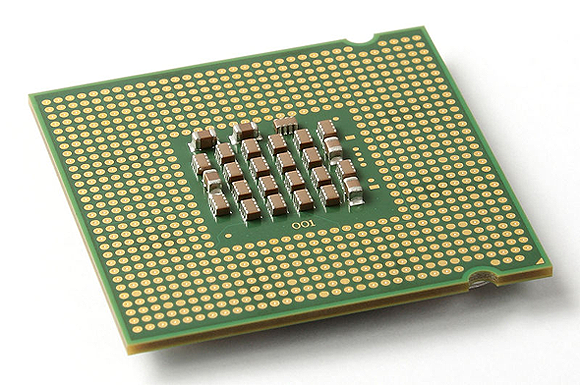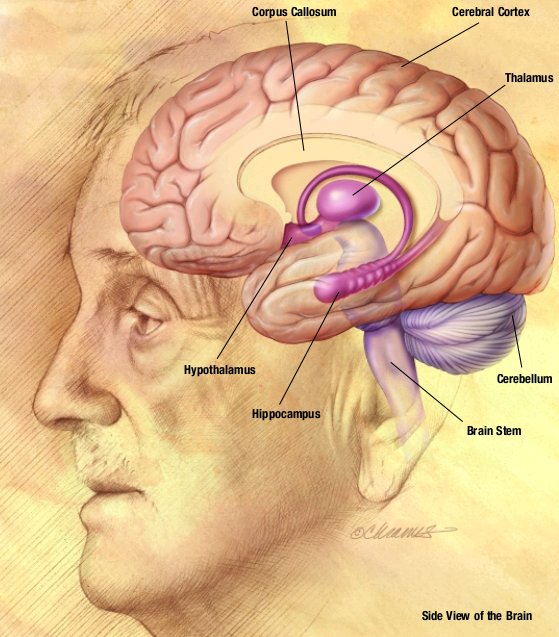Inside the Machine
by Andrew Boyd
Today, inside the machine. The University of Houston's College of Engineering presents this series about the machines that make our civilization run, and the peoplewhose ingenuity created them.
Computers can do some remarkable things, like recognizing faces and routinely beating the world's greatest chess players.
So what do we find if we look deep inside a computer? The important work takes place in a small but specialized device called the central processing unit or just CPU. In today's computers, CPUs sit on a chip that's about an inch on each side and weighs about half an ounce. The rest of the computer, be it big or small, is designed to get numbers to and from the CPU.

The CPU is often thought of as the computer's brain. When we look inside this 'brain,' we can see the miracles that lie within. And those miracles are: addition, subtraction, multiplication, division, and comparison. The CPU can also use numbers as instructions. Not really all that miraculous.
In the early twentieth century mathematicians turned their attention to something new called computability theory. They essentially asked, 'What does it mean to compute?' Many formal models of computing were proposed, but it was soon recognized the models were all fundamentally the same, just dressed up differently. One particular version, proposed by Alan Turing in 1936, is today called a Turing Machine. Modern computers are practical recreations of Universal Turing Machines.
And amazingly, pretty much everyone agrees that Turing machines really do capture our intuitive sense of what it means to compute. Anything that can be reduced to a sequence of mechanical steps — like playing chess or recognizing a face — can be done with a Turing Machine. This very, very powerful conception — that anything we think of as computable can be done on a Turing machine — is called the Church-Turing Thesis.
This thesis profoundly impacted the fields of artificial intelligence and the philosophy of mind. If the human brain is a computing machine — as many would argue — then the Church-Turing Thesis implies we can replicate what goes on in the human brain with the computers we have today. They may need to be bigger and more powerful, but we don't need some breakthrough in their design. Looked at another way, proponents would argue that if we want to know what goes on in our brains, we need look no further than our computers.

Of course, artificial intelligence has yet to produce anything so astounding as the human brain. But if it does, we'll have to concede: thoughts reduce to simple arithmetic. I'm not sure that computes'
I'm Andy Boyd at the University of Houston, where we're interested in the way inventive minds work.
Notes and references:
For a related episode, see CONSCIOUSNESS.
Turing Machines are formally defined by the reading and writing of individual symbols, a read/write device, and states (for more details see, for example, the Wikipedia entry on Turing Machines). I've here focused the higher level operations of addition, subtraction, multiplication, division, comparison, and the reading of instructions, both because these more closely relate to the activities performed by modern CPUs and because they're somewhat simpler to convey in a short essay. Computers with multiple CPUs (e.g., 'dual' or 'quad' core processors) were not mentioned for brevity. None of these points detract from the fundamental conceptual ideas presented in this essay.
The Church-Turing Thesis takes its name from Alan Turing and Alonzo Church, both of whom were instrumental in the development of computability theory.
The idea that the 'human brain is a computing machine' falling within the domain of the Church-Turing Thesis is perhaps best captured in arguments by David Deutsch (1985) where he concludes:
'I can now state the physical version of the Church-Turing principle: 'Every finitely realizable physical system [e.g., the human brain] can be perfectly simulated by a universal model computing machine operating by finite means.' This formulation is both better defined and more physical than Turing's own way of expressing it.' (bracketed text added by E. A. Boyd)
It's far from clear that Turing, Church, or their contemporaries ever held to this extreme interpretation of the Church-Turing Thesis.
The Church-Turing Thesis. From the Web site of the Stanford Encyclopedia of Philosophy: http://plato.stanford.edu/entries/church-turing. Accessed November 30, 2010.
D. Deutsch. 1985. 'Quantum Theory, the Church-Turing Principle and the Universal Quantum Computer.' Proceedings of the Royal Society, Series A, 400, 97-117.
All pictures from Wikimedia Commons.